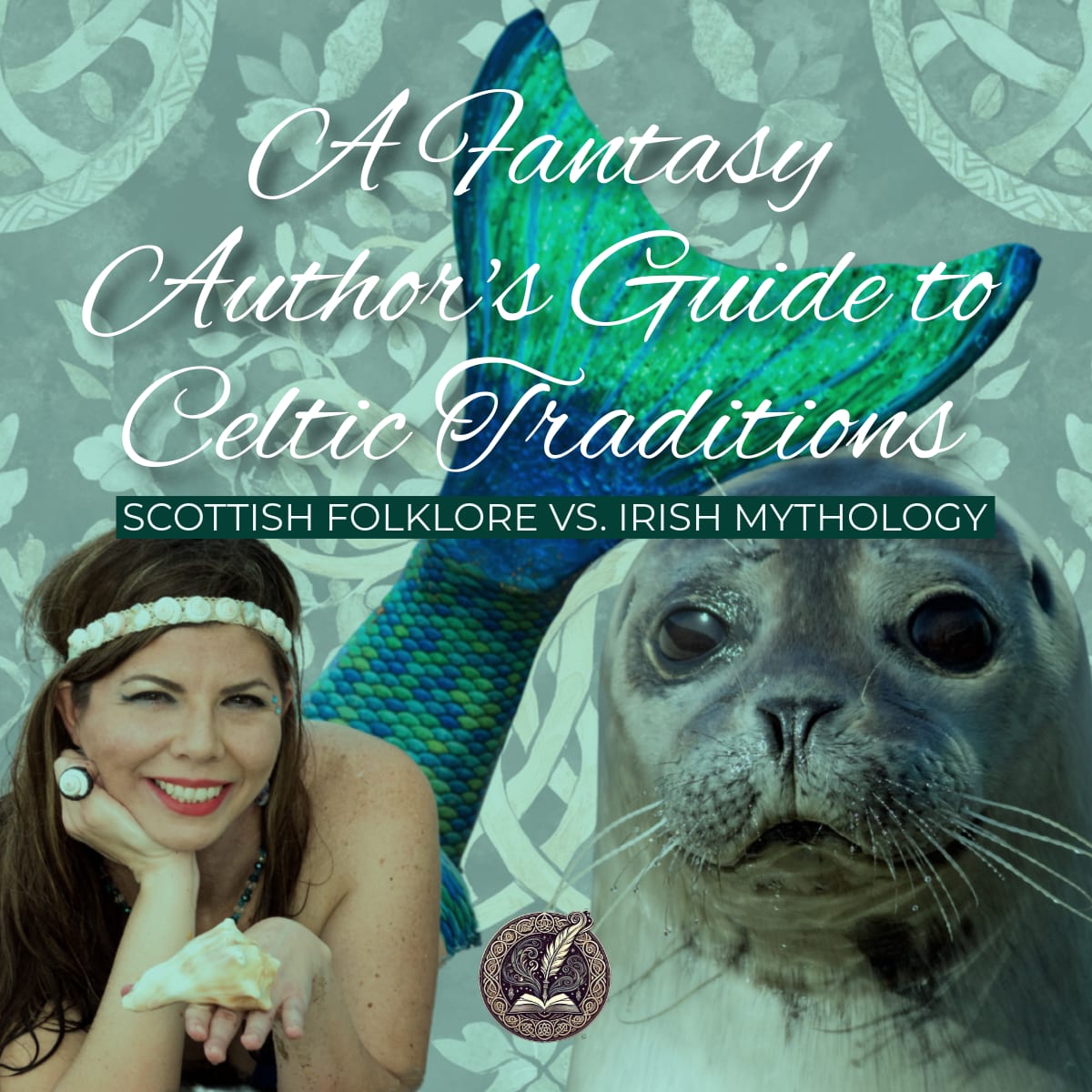Introduction: The Tapestry of Celtic Traditions
As fantasy authors, we often draw from the rich well of Celtic traditions, but understanding the distinct differences between Scottish folklore and Irish mythology can elevate our world-building from generic "Celtic fantasy" to authentic, culturally-grounded storytelling. Having woven selkie lore through Whispers of the Selkie and currently researching for a new series that delves deeper into Celtic traditions, I've discovered that these mythologies, while interconnected, offer unique magical systems and frameworks.
The Foundational Differences
Irish Mythology: The Structured Pantheon
Irish mythology presents a more organized mythological structure, built around four major cycles:
- The Mythological Cycle: Featuring the Tuatha Dé Danann (the supernatural race that became the Irish gods)
- The Ulster Cycle: Heroic tales including Cú Chulainn
- The Fenian Cycle: Stories of Finn MacCumhaill and the Fianna
- The Historical Cycle: Legendary kings and historical figures
Scottish Folklore: The Living Landscape
Scottish folklore tends to be more localized and landscape-focused, with traditions varying dramatically between the Highlands, Lowlands, and Islands. Rather than grand mythological cycles, Scottish folklore emphasizes:
- Clan-specific legends and family curses
- Geographical spirits tied to specific lochs, mountains, and glens
- Shape-shifting traditions (selkies, kelpies, each-uisge)
- Border ballads and reiving tales
Magical Creatures: Cousins, Not Twins
Water Spirits - A Perfect Example
- Irish: The merrow (Irish mermaid) carries a magical cap (cohuleen druith) that enables underwater breathing
- Scottish: Selkies are seal-people who shed their seal skins to become human, with the skin serving as their connection to the sea
Both are water spirits, but their magic systems differ fundamentally. The merrow's power is object-based (the cap), while the selkie's transformation is intrinsic to their dual nature.
The Seelie and Unseelie Courts
While both traditions feature fairy courts, Scottish folklore developed the more structured Seelie (benevolent) and Unseelie (malevolent) court system, which has heavily influenced modern fantasy literature.
Magic Systems in Practice
Irish Approach: Formal Magic
Irish mythology often features:
- Druids with formal training and hierarchical power structures
- Geasa (magical taboos/obligations) that bind heroes
- Cauldrons, harps, and other magical objects with specific powers
- The Otherworld as a parallel realm with its own rules
Scottish Approach: Wild Magic
Scottish folklore emphasizes:
- Inherited or cursed magical abilities
- Magic tied to specific locations (thin places between worlds)
- Transformation magic that changes the very nature of beings
- The Otherworld bleeding into the everyday world
Language and Cultural Context
Gaelic Influences
- Irish Gaelic preserved more mythological terminology and formal structures
- Scottish Gaelic retained more everyday magical beliefs and practical folklore
- Both languages offer authentic names and concepts, but serve different narrative purposes
Practical Applications for Fantasy Authors
For World-Building:
- Choose Your Foundation: Irish mythology works well for epic fantasy with formal magic systems, while Scottish folklore suits urban fantasy where magic hides in plain sight
- Respect Regional Variations: A Highland selkie operates differently from an Orkney selkie
- Understand the Cultural Context: Irish heroes often face destiny, while Scottish folklore heroes often face family curses or geographical challenges
For Character Development:
- Irish mythological characters often embody archetypal roles (the hero, the wise woman, the trickster)
- Scottish folkloric characters tend to be more morally ambiguous, shaped by their specific circumstances and locations
Modern Fantasy Applications
In my own work, I've found that Scottish folklore's emphasis on transformation and family legacy works perfectly for urban fantasy. Morwenna's selkie heritage in Whispers of the Selkie draws from Orkney traditions, while my current research into Irish mythological structures is revealing fascinating possibilities for blending both traditions in future projects.
Key Takeaways for Authors:
- Irish mythology provides excellent frameworks for epic fantasy series
- Scottish folklore offers rich material for contemporary fantasy and family saga elements
- Both traditions emphasize the importance of place and ancestry
- Neither should be treated as interchangeable "generic Celtic" material
Conclusion: Honoring the Traditions
Whether you're drawn to the structured pantheons of Irish mythology or the wild, localized magic of Scottish folklore, both traditions offer fantasy authors authentic, culturally-rich material. The key is understanding that while they share Celtic roots, they've developed distinct characteristics that can enhance your world-building when used thoughtfully.
As I continue developing the magical systems in my own Celtic fantasy works, I'm constantly amazed by how these ancient traditions continue to offer fresh inspiration for contemporary storytelling.
